Catalonia offers those seeking truly impressive wine tourism experiences the opportunity to explore visually striking landscapes, top-tier wines from Spain, ancient monasteries and landmarks, and the ability to engage with winemakers truly dedicated to their craft. Read on to dive into this magnificent wine travel destination and explore some of Catalonia’s best wineries throughout 2024.
Catalonia is a wine region often considered a country within a country, any casual stroll through Barcelona glints at an air of distinct separation. From the coastal Mediterranean warmth along the hills towards the alpine foothills, the culinary and enological possibilities are endless.
The Catalunya D.O. (Denominacio d’Origen or Designation of Origen) grows a dizzying array of grapes. Wines are made with Chardonnay, Grenache Blanca, Macabeo, Muscat, Parellada, Sauvignon Blanc, Xarel-lo, Malvasia, Pedro Ximenez, and that’s just the white grapes.
Tempranillo, Spain’s great red grape, gets the local moniker Ull de llebre. Cabernet Franc and Cabernet Sauvignon grow alongside Garnacha (hairy Grenache is an intriguing cultivar, related to the better-known Garnacha Negra). Pinot Noir, Carignan, Trepat, Merlot, Monastrell, the list is as international as the local cuisine.
Dry white wines flourish here, as do powerfully structured red wines. The proximity of Barcelona offers a ready market for the wide-ranging diversity of wines. But there’s more finesse to the market and the wines than can be seen at first blush. Swirl, see, sip, and enjoy.
In This Guide
- The History of Catalonia
- Catalonia’s Wine Regions
- Best Penedés Wineries
- Best Priorat Wineries
- Wineries in Montsant
- Empordà Wineries
- Pla de Bages Wineries
- Terra Alta Wineries

The History of Catalonia
Anchored to the Mediterranean at Barcelona, Catalonia (we’re sticking with the English spelling for the sake of continuity) joins France and Spain while denying them both. Locals are often fiercely loyal to a Catalan first identity, and the region bears the historical scars of turmoil to back it up.
RELATED: The Difference Between Spain’s Wine Region Designations, DO, DOCa & DOQ
The first fight for independence was from Aragon, the next from Castilla, and then from Madrid. In 1977, Catalonia was granted a place among Spain’s autonomous regions. Infighting aside, Catalonia sports its own local language, Catalan, and the region is effectively and legally bilingual. The Catalan culture and language crosses the French border into Roussillon, but French Catalonia is a subject for another time.
Barcelona wins two trophies as both the Catalan capital and the second-largest city in Spain. It’s an industrious place, forgoing the traditional siesta and bringing technological revival and market share to the regional wines. Stainless steel made its first foray into winemaking in Catalonia, as did traditional method sparkling wine.
And while Catalonia is indeed a D.O., there are 9 officially recognized regions within it, some of which warrant very close looks…and lingering sips.
Catalonia’s Wine Regions
Most of Catalonia’s wine regions run along the Mediterranean Sea. Barcelona marks the eastern edge and vines cascade across the rolling countryside east and ever so slightly south. The region, like its politics, borders on mildly complicated as smatters and patches of it reach farther inland to the north and east. But the bottles making waves are currently coming the breezy keep along the sea.
Cava’s fame and fortune rises from this land. Almost 95% of Spain’s answer to Champagne is made in Catalonia. The grapes may be wildly different from those of its French mentor, but the style is deliciously familiar. The fertile plateau hosts fierce competition between two giants of the sparkling wine world: Cordoniu and Freixnet. Classic method sparkling wines made from Macabeo, Xarel-lo, and Parellada join plantings of Chardonnay and Pinot for the increasingly popular rose-style Cava. But it’s red wines that now travel the path paved by Cava’s road to the world’s glasses.
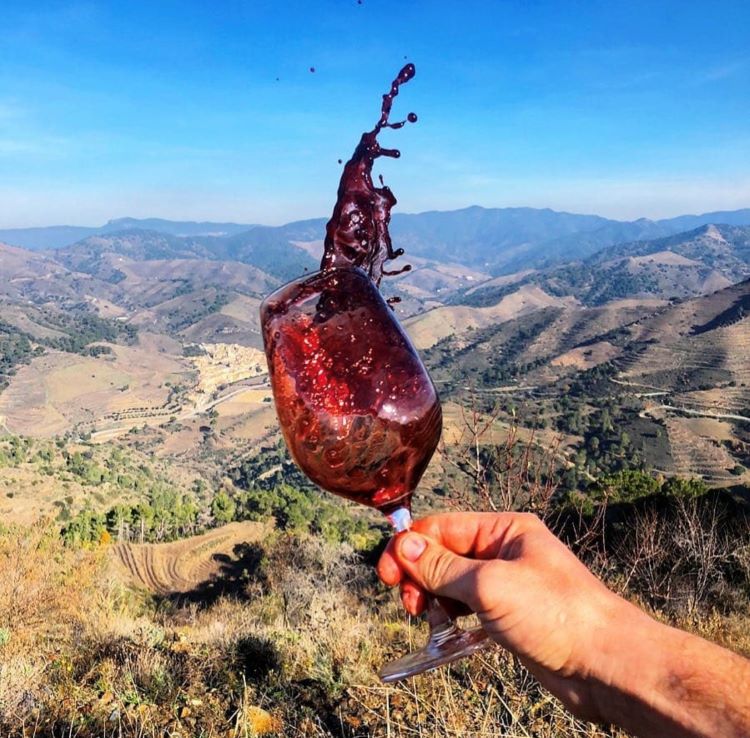
Wine production here has been in practice since Roman times and Catalonia has always been celebrated for its diverse and robust wine culture, but it has become a premier destination for wine lovers in recent years. This resurgence has been fueled by a dedication to preserving winemaking traditions while embracing modernity, making it an exciting time for Catalonia’s wine industry. As we’ve already mentioned, the region produces a variety of wines, from the full-bodied reds of Priorat to the innovative Cava production in Sant Sadurní d’Anoia. Each area, including Montsant, Empordà, and Penedès, contributes uniquely to the rich range of Catalan wines.

In the serene landscape of Terra Alta, the winemaking process is a blend of tradition and innovation, producing excellent wines that reflect the region’s natural beauty and Mediterranean climate. The Pla de Bages, another key player in Catalonia’s wine scene, has seen a revival in wine production, particularly in the crafting of organic wines, offering a glimpse into the heart of Penedès winemaking. These regions, along with the Conca de Barberà, are not just renowned for their wines but also for high-quality olive oil production, showcasing the versatility of Catalonia’s agricultural landscape.
The Costa Brava, with its picturesque setting along the Mediterranean coast, offers a unique opportunity for wine enthusiasts. Here, vineyards like La Vinyeta stand out, showcasing the region’s commitment to producing great wines. The Empordà, in Catalonia’s northeastern corner, is home to family-run wineries that have cultivated a long history of wine production, with vineyards just a relatively short drive from Barcelona. Perfect for #Winetravelers who want to savor the city and visit historic sites like the Sagrada Família and then end the day with a casual drive through wine country.
Priorat (one of only two DOCa –DOQ– wine regions in Spain) and Montsant, known for their full-bodied red wines, have become symbols of Catalonia’s winemaking excellence. Wineries in these regions, such as those established by Alvaro Palacios, have garnered international acclaim for their complex and age-worthy wines, often made from century-old Garnacha vines. The unique terroir, characterized by its schist and limestone soil, imparts distinctive qualities to the wines, making them sought after by connoisseurs and casual drinkers alike.
The Best Wineries in Catalonia to Visit for Wine Tasting This Year
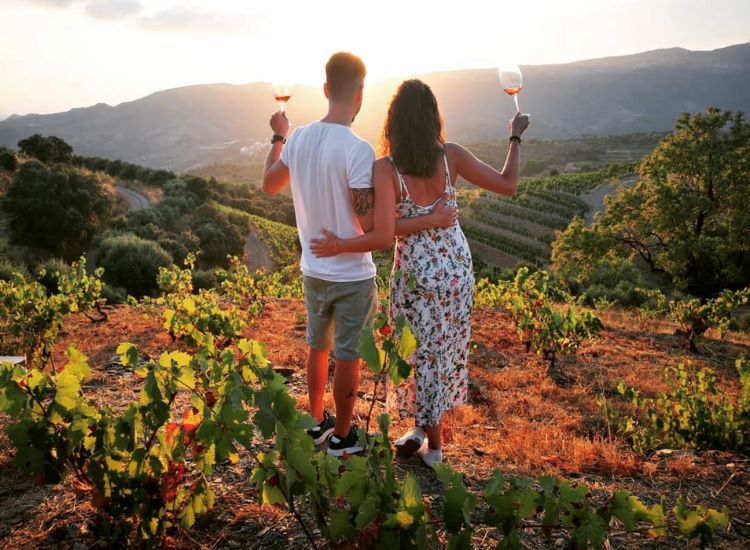
Wine routes through Catalonia offer a comprehensive experience of the region’s wine culture. From the Cava producers in Sant Sadurní d’Anoia, known for their bubbly and refreshing sparkling wines, to the robust and earthy flavors of Priorat wines, the wineries of Catalonia we mention below offer an array of activities for every visitor. Whether it’s a day trip to explore the vineyards or a luxurious stay in a nearby hotel, wine tourism in Catalonia caters to all preferences. Special occasions can be celebrated with private wine tours, allowing you to engage intimately with the winemakers themselves and their craft. Note that this is not an exhaustive list of wineries, just some of our favorites we’ve encountered when visiting. Feel free to suggest other wineries throughout Catalonia in the comments for other #Winetravelers!
Best Penedés Wineries
Were you to take a leisurely road trip from Barcelona through the surrounding regions, Penedés marks your first stop. As the closest region to Barcelona, this area rises like the low-lying steps entering a luxury resort, with a bottle of sparkling wine in hand to greet you. This is Cava country. The ready market in Barcelona gave this region the financial stability to pioneer the introduction of international vine varieties to the Catalonian landscape, making one of the region’s most diverse productions. Tarragona is next, offering a flourishing range of crisp white wines. The red wines here are made in the Priorat style (but hang on a sec, we’re getting there), but much of their claim was annexed by the separate Montsant D.O. in 2001.
RELATED: Best Wineries in Penedès to Visit for Wine Tasting This Year [Plus Wine Tour Options]

Head north from Tarragona and you’ll find yourself in Conca del Barberá among its chalky limestone hills which produce robust red wines from local grapes. You may meander into the Costers del Segre if you keep driving, but the region ranges across half a dozen scattered areas with vineyards cropping up as bush-trained Macabeo and Garnacha hunkering down under the warm sun.
Bodegas Agustí Torrelló Mata
La Serra, s/n, 08770, Barcelona, Spain
Known for its sustainable production of Cavas with autochthonous varieties, this winery in Penedès offers a range of services including guided tours of the winery and vineyards, wine tastings, and even a restaurant and hotel for a complete experience.
Bodegas Masía Torreblanca
Masia torreblanca, Calle Torre Blanca, 08734 Sant Miquel d’Olèrdola, Barcelona, Spain
Set in a 15th-century estate in the heart of Penedès, Masía Torreblanca is surrounded by idyllic vineyards and Mediterranean flora. The winery provides a serene setting for wine tastings and offers panoramic views of the landscape.
Bodegas Cavas Codorniu
Avda. Jaume Codorniu, s/n, 08770, Barcelona, Spain
This winery offers a unique experience with its underground cellars and electric train tours. Known for almost 500 years of history and its modernist art, Cavas Codorniu provides a sensory journey through its prestigious cellars.
MontRubí
08736 L’Avellà, Barcelona, Spain
This winery, situated in the idyllic L’Avellà Valley in Alt Penedès, practices organic viticulture. MontRubí offers a remarkable experience with its 100-hectare farm and diverse vineyards. The winery is known for its commitment to organic practices and provides visitors with tastings and pairings that highlight the unique qualities of their wines.
Best Wineries in Priorat


Images courtesy Jordi Ustrell and Greig Santos-Buch.
Head further south and east if your glass calls for the hearty, heady red wines of Montsant and Priorat. The two paragons of robust Catalonian red have taken the global wine stage with gusto.
Montsant and its rugged gradient wraps itself around Priorat’s schist peaks in a protective embrace. One starts their trek up a hilly climb, and as the terrain rises, the soil changes from limestone and granite in Montsant to distinctly schist in Priorat. Olive groves, bare mountain peaks, and ancient vines grown low to the ground make for spectacular views along a one-horse road leading up the sunny mountainsides through Montsant towards the upper reaches of Priorat.
RELATED: Here’s an Ideal Itinerary for Visiting the Priorat Wine Region
The predominantly Garnacha wines here can be laced with Cariñena (Carignan). Savvy producers recognized the potential of these rugged slopes early and planted Cabernet Sauvignon, Merlot, Syrah, and some Pinot Noir. Structured with velvety tannin, Priorat’s wines have an age-worthy excitement that runs through the undercurrent of low-yielding, ancient vines planted alongside younger international varieties.
Under the Catalan sun, deep garnet and nearly black gems glisten along the vines. And in the glass, it swirls a nearly purple heaven of bramble fruits, spice, and leather. Makes for a lovely capstone to any road trip, especially through this secret garden-style region.
READ: A Local Winemaker’s Take on the Best Vineyard Hotels & Places to Stay in Priorat
Celler Devinssi
Carrer dels Masets, 1, 43737 Gratallops, Tarragona, Spain
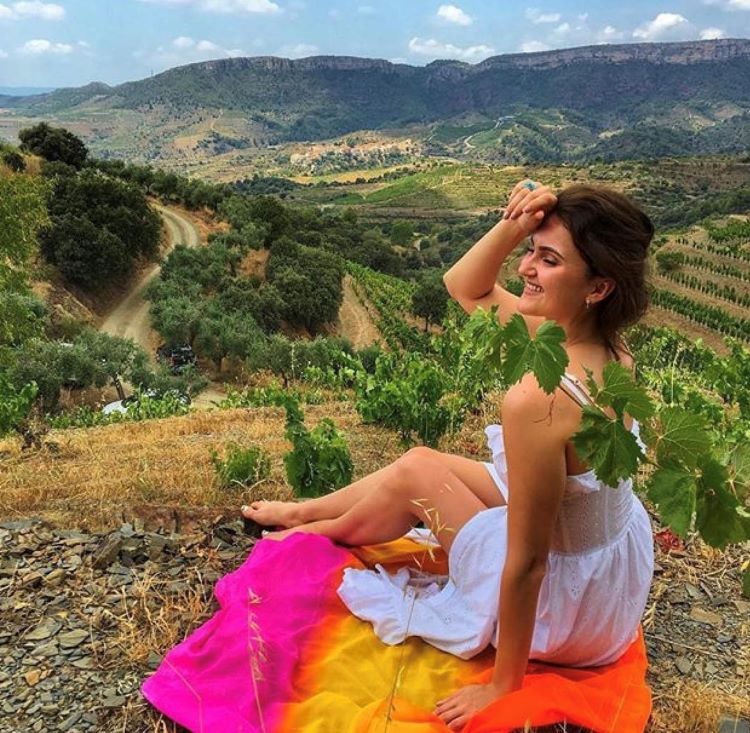
Celler Devinssi is a boutique winery in the Priorat region, known for its small-scale production that focuses on quality and terroir expression. The winery offers intimate and detailed wine tours, providing visitors with a deep understanding of their winemaking process and the unique characteristics of their wines, plus incredible wine tastings overlooking the region right in the vineyard. If you visit, be sure to let Jordi (one of Devinssi’s winemaker and tour/tasting guide), that Winetraveler sent you! You’ll be in for a treat :).
RECOMMENDED: Book a guided tour of the Priorat wine region with Spanish Trails from Barcelona. It includes round-trip transport, three different tasting sessions held in the winemaking villages of Morera de Montsant, Gratallops and Porrera. Plus, a stop at the acclaimed Clos Figueres winery for a delicious 3-course lunch (included), loaded with Catalan specialties. Wine Tours also offers a similar day trip that also includes olive oil tastings, lunch and visits to three fantastic wineries. Finally, El Brogit offers an exceptional and completely customizable private Priorat wine tour, with lunch (vegetarian options available) and olive oil tasting in the region.
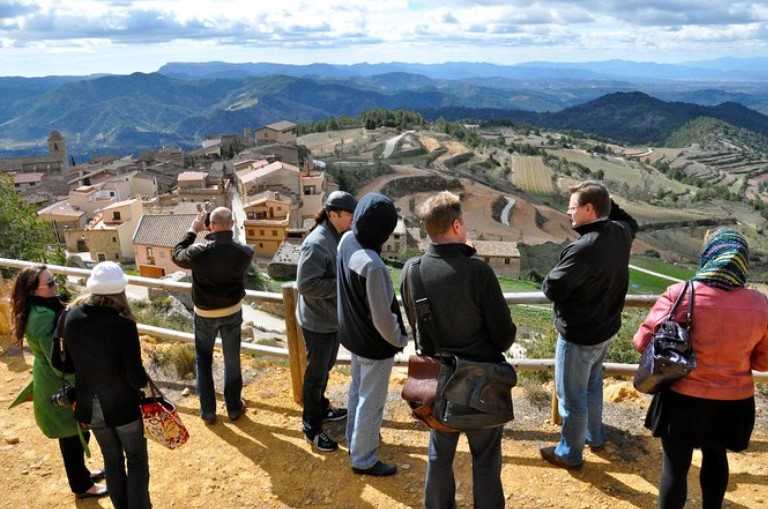
Celler Clos Figueras & Restaurant
Carrer de la Font, 38, 43737 Gratallops, Tarragona, Spain
Clos Figueras winery is a must-visit for the Winetraveler making a stop in Priorat. Alongside the winery, Restaurant Les Figueres offers a culinary delight, specializing in local, organic, and seasonal Catalan cuisine. The restaurant prides itself on using high-quality, ecologically farmed products, including fresh produce from its own kitchen garden. This combination of exquisite wine and gastronomy, set amidst the stunning backdrop of Priorat’s landscape, makes Celler Clos Figueras & Restaurant Les Figueres an essential destination for a comprehensive wine tourism experience.
Clos Galena · Domini de la Cartoixa
Camino de la Solana, s/n, 43736 El Molar, Tarragona, Spain
Clos Galena offers an authentic experience through its vineyards and cellar. Winetravelers can enjoy a comprehensive tour led by knowledgeable guides, learning about the winery’s unique terroir and grape varieties. The winery is celebrated for its red wines, but we also highly recommended diving into the whites.
Álvaro Palacios Winery
Polígono Industrial 6, Parcela 26, 43737 Gratallops, Tarragona, Spain
Led by a legendary figure in Spanish winemaking, this winery is known for high-quality wines that have helped put Spanish fine wine on the map. The winery arranges luxury food and wine tours for private groups, offering an exclusive taste of Priorat.
Best Wineries in Montsant
Montsant
Celler Comunica
Mas d’en Cosme, 43730 Falset, Tarragona, Spain
Founded in 2010 near the Sierra de Llaberia, Celler Comunica focuses on producing wines with a pure and fresh character. The winery utilizes grapes from 25 to 70-year-old vines of Garnatxa, Carinyena, and Syrah varieties, grown in granite sandy soils. Visitors can expect wines that are a true representation of Montsant’s terroir, matured on lees in stainless steel vats.
Baronia del Montsant
Carrer del Comte de Rius, 1, 43360 Cornudella de Montsant, Tarragona, Spain
Nestled in the foothills of Montsant, this winery offers a unique blend of history, tradition, and modern winemaking. Experience the essence of Montsant through Baronia del Montsant’s diverse range of wines, including Vins d’Autor, Vins d’Expressió, and Vins Màgics. The winery’s setting near Siurana adds to its charm, providing a picturesque backdrop for a memorable wine tourism experience. We highly recommend hiking up to the ancient hilltop village before sunset for a bite (bring a bottle of wine), and taking in the vast countryside views from an elevated vantage point.
Empordà Wineries
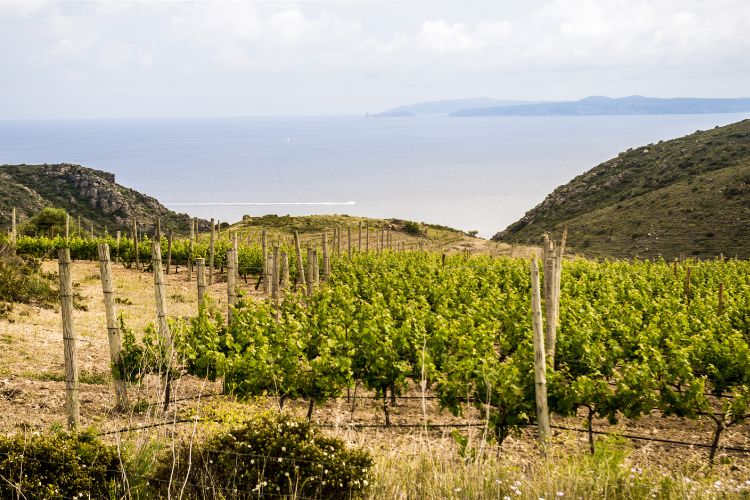
Empordà is strategically situated near the Costa Brava, close to the French border. This location on the Catalan wine route offers a unique terroir influenced by both the Mediterranean Sea and the Pyrenees mountains. Empordà is known for its diverse microclimates and variety of soils, contributing to the production of a wide range of wine styles, including robust reds, aromatic whites, and traditional sweet wines. The region, rich in history and culture, is dotted with medieval villages and ancient vineyards, making it a compelling destination for wine enthusiasts and travelers seeking an authentic Catalan wine experience.
La Vinyeta
Ctra. Mollet a, 17752 Masarac, Girona, Spain
La Vinyeta stands out in Empordà for its commitment to sustainable and eco-friendly practices. The winery offers tours, tastings, and even picnics in the vineyard for Winetravelers to enjoy. The staff here are super into their craft, allowing you to really get to know what life is like this portion of Catalunya’s wine country. It’s also a great place to simply stop for delicious eats and olive oil.
Mas Geli Winery
Diseminado Barri Bernagar- Masos Pals, 5, 17256 Pals, Girona, Spain
Found in the beautiful landscapes of Empordà, Mas Geli offers visitors a chance to explore their vineyards and taste a variety of wines via guided tours in the vineyards themselves. The winery is known for its commitment to quality and the unique character of its wines. They also offer lunch in remarkably serene setting.
Celler Mas Pòlit
Carrer Sant Quirze, s/n, 17781 Vilamaniscle, Girona, Spain
This winery provides a unique experience amidst beautiful settings and offers tastings of its distinctive wines. The vineyards here are located in a picturesque area with stunning views, making the tasting experience both enjoyable and scenic.
Pla de Bages Wineries
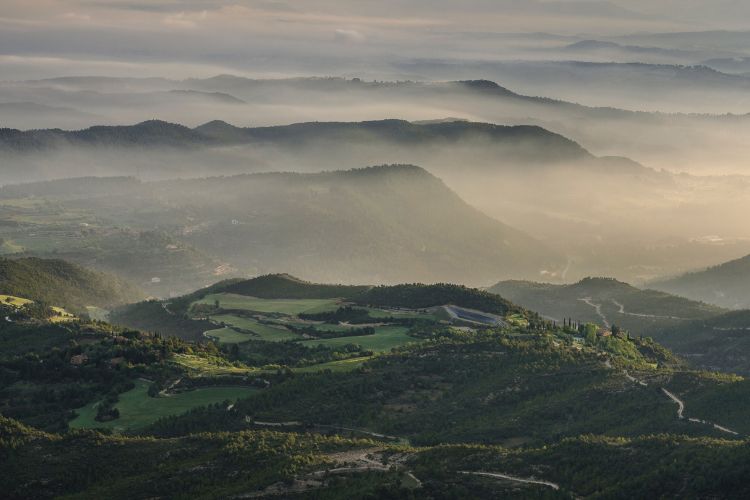
Bodegas Abadal
Celler Abadal, 08279 Santa Maria d, Barcelona, Spain
Located in the heart of Catalonia, Bodegas Abadal is celebrated for its wines that reflect the spirit and personality of the Bages region. Their various wine tourism offerings provide a unique taste of the local terroir, making for a memorable wine-tasting experience. Note that this winery can get busy on weekends, definitely make your booking in advance by calling the number above or via their website. The restaurant is only open on weekends. Check out their events calendar as these are something they’re known for, and don’t forget to stop by the bodega-shop at the end of your visit to buy your wine at a discount.
Les Acacies
Finca Les Acàcies Carretera B-431 km 56,7 08279 Avinyó Barcelona Finca Les Acàcies, B-431, km 56, 7, 08279 Avinyó, Barcelona, Spain
Known as one of the smallest wineries in the world, Les Acacies offers an intimate and unique wine experience. Situated in Pla de Bages, the winery shows the diversity and innovation present in the region’s wine scene.
Terra Alta Wineries
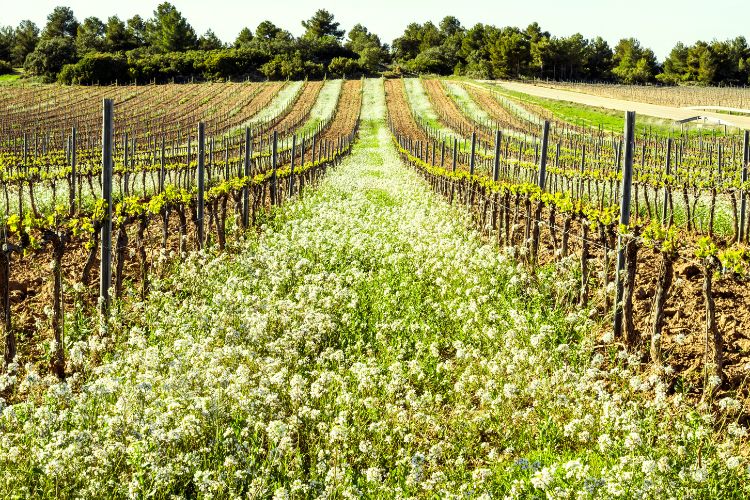
Celler Piñol
Avinguda d’Aragó, 9, 43786 Batea, Tarragona, Spain
Celler Piñol is renowned in Terra Alta for producing high-quality organic wines. With a deep respect for the environment and a commitment to sustainable practices, their wines reflect the rich and diverse character of the region’s terroir. They also offer modest and warm accommodations if you’re looking to stay in the DO Terra Alta region and explore other wineries nearby.
Herència Altés
N-420, 798, 43780 Gandesa, Tarragona, Spain
With its dreamlike surroundings and dedicated attention to customer service, this is a special must-stop winery in the Terra Alta area. With a focus on sustainability, Herència Altés offers a range of wines that beautifully express the distinct flavors of Terra Alta. Like others nearby, they’re known for their dedication to preserving the unique characteristics of the local grape varieties and producing wines that are true to their origins.
You are reading “The Best Wineries in Catalonia to Visit This Year” Back To Top
wineries near me for wine tasting, wineries with restaurants, lunch, wine regions of Catalonia, Catalunya wine tours, what is the Catalan wine region known for, Penedes, Montsant, Priorat, DO Emporda, De Bages, DO Terra Alta: Spain travel itinerary
If you enjoyed this guide, follow our Facebook page and consider joining our Facebook Group to interact with other Winetravelers and for wine travel inspiration around the world. Be sure to follow us on both X, TikTok and Instagram to stay up to date with our trending content.
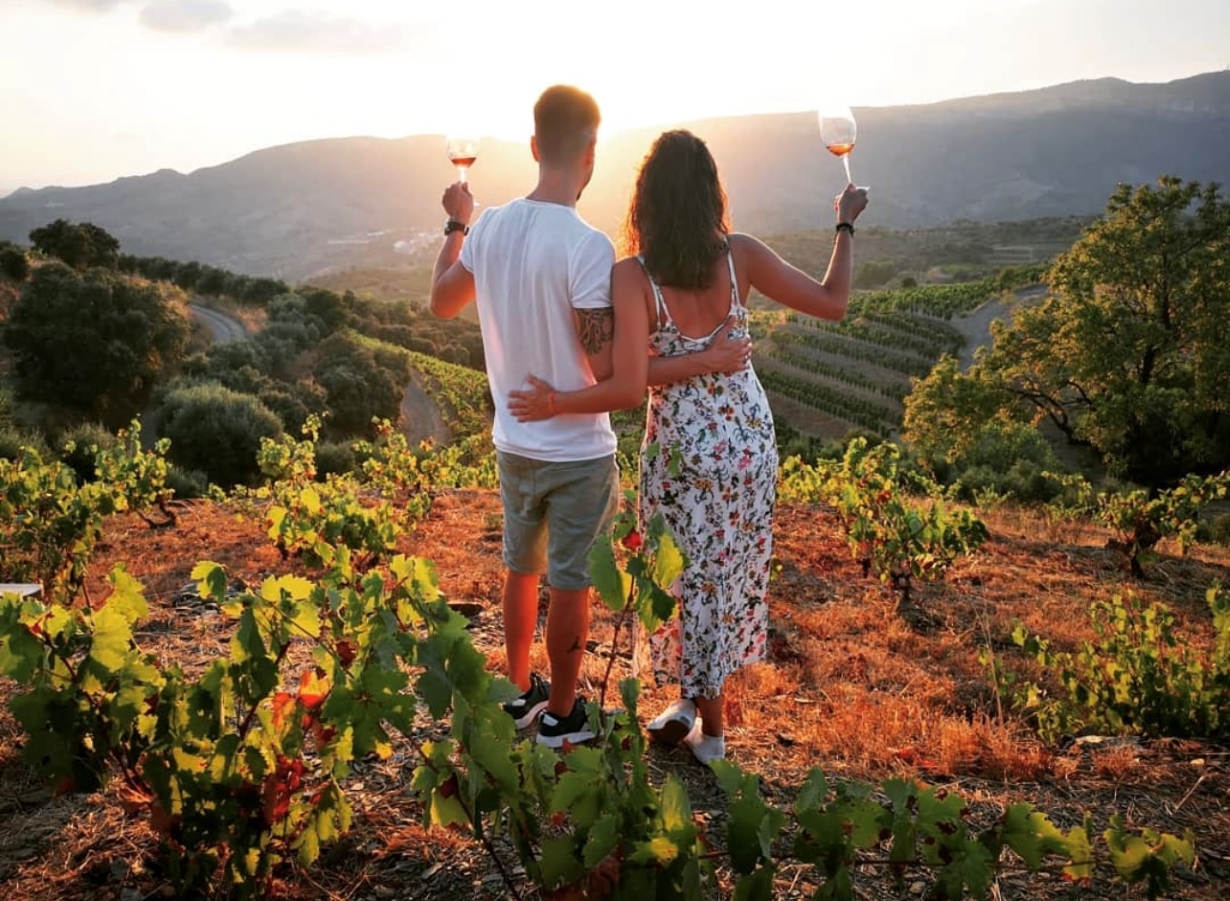
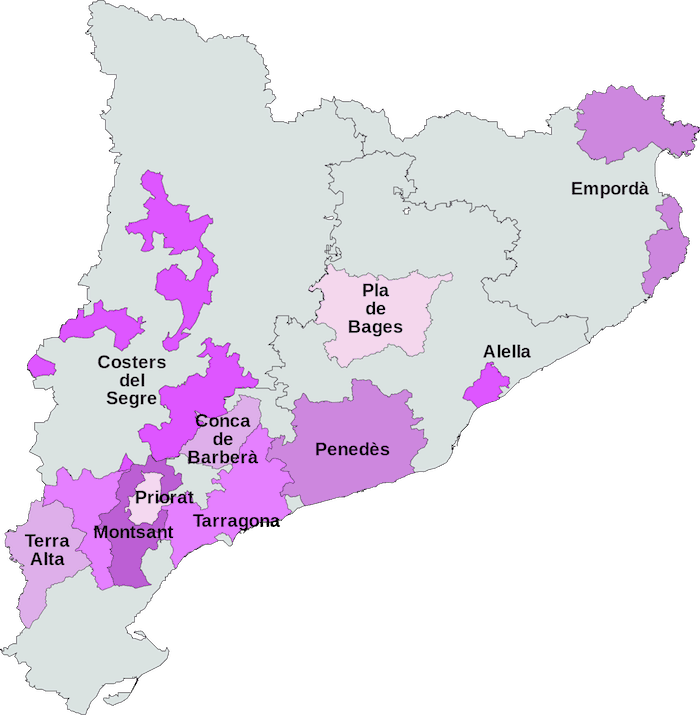
This is a nice article about Catalan wine. Too bad no mention of the DO Emporda. While a small region there are a number of great wineries and wine families in the region.